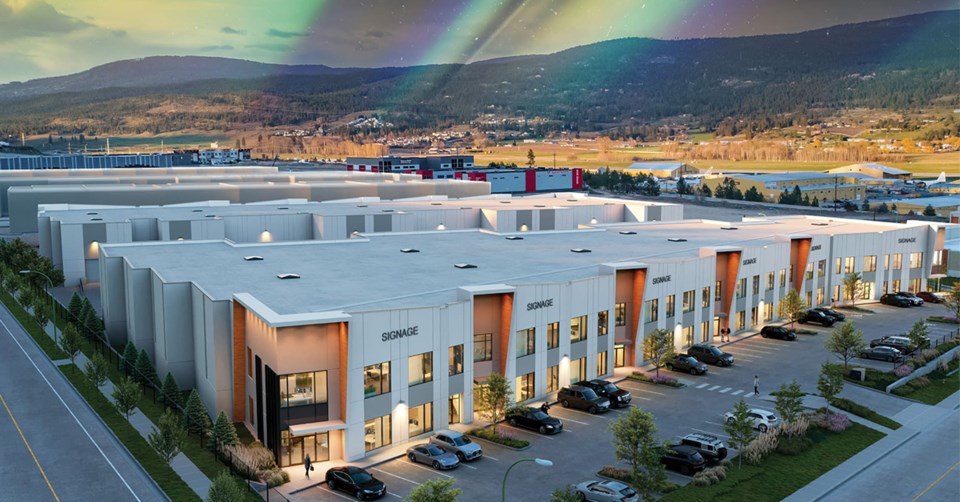A shortage of industrial land across the Okanagan is stirring especially strong emotions in Kelowna, where a new Official Community Plan has marked the Kelowna Springs Golf Course for redevelopment.
Upwards of 236 acres of land are required by 2040 to meet projected demand for industrial space, according to studies prepared in support of Kelowna’s new Official Community Plan.
“A significant increase in industrial development, such as storage, distribution and warehousing space is expected over the next 20 years,” says Robert Miles, long range policy planning manager for Kelowna.
To meet the need, the city has marked the 106.5-acre Kelowna Springs Golf Course for conversion to industrial use. It could be the fourth course marked for development since the 1990s, leaving the city with just 13 courses.
Other impacted courses include Shadow Ridge, purchased by the city in 2016 for Kelowna International Airport’s expansion but recently granted a five-year lease on life; Central Park, whose future was mapped out for retail and industrial development in 1996, and Fairview, which ceased operation in 1998 and subsequently rezoned for housing.
The threat to Kelowna Springs has prompted Kelowna mayoral candidate Tom Dyas to say he’ll fight to protect the course, but they’re not the only properties threatened in the city’s appetite for industrial space.
The city sought exclusion of 40 acres from the Agricultural Land Reserve last year for a new transit centre. It received approval on March 31. Some underutilized farm properties in Kelowna, Spallumcheen and elsewhere in the Okanagan are also slated for industrial development.
But even these steps may not fully address the need.
“Market indicators suggested that the industrial land shortage is much more pressing, due to factors that include speculative pressure from other uses such as residential and commercial development,” Miles said regarding the situation in Kelowna.
He noted that demand for industrial land has remained high sine the study was released. Airport Business Park adjacent to Kelowna International Airport has continued to grow quickly and will potentially see full build out in the next two to three years, for example.
A shortage of new sites also means higher prices. Beedie purchased 14.7 acres at 2050 Pier Mac Way earlier this year for approximately $1.7 million acre, described by its broker CBRE Ltd. as the “largest single-property industrial land transaction by dollar value in the city’s history.”
Beedie plans to develop 144,000 square feet of industrial and office space on the site.
Meanwhile, existing industrial sites close to downtown are being converted to other uses. A new vision is in the work for the Kelowna’s historically industrial North End following the closure of the Tolko Mill.
BC Tree Fruits Co-operative sold an adjacent four-acre warehouse site to Mission Group last December by for $23.7 million. Mission Group has since leased the property to BC Housing for a homeless shelter.
BC Tree Fruits has also moved its headquarters from downtown Kelowna to Lake Country and owns an 85-acre tract near the airport, originally purchased in 2019 for a new, consolidated fruitpacking operation.
The departures set the stage for the conversion of these traditional industrial sites to other uses, and underscores the need to make fresh provision for the city’s industrial needs.
“While this vision is expected to include a mix of new residential and commercial development, one of the plan’s key objectives is to retain a core of industrial lands, preserving employment opportunities and much-needed services in the area,” Miles said.
Kelowna isn’t alone in facing a shortage of industrial land.
West Kelowna expects to need 228 acres of industrial land by 2040, according to a report Colliers International’s strategy and consulting division prepared for the municipality last year.
“When it comes to the need for industrial space, and the value that this land is generating, Kelowna is facing the same dynamics that West Kelowna is – strong, soaring demand,” said Russell Whitehead, associate vice-president with Colliers Strategy and Consulting. “They’re all facing these issues, and industrial is a key land use in terms of overall economic sustainability.”
Similar to Kelowna, a portion of the demand in West Kelowna could be met through more intensive use of underutilized lands. And like Kelowna, need could exceed projections.
“This is the minimum expected supply necessary to serve the rapidly growing industrial demand in the area, however, the true scale of demand could potentially exceed this baseline figure,” Colliers stated.
Whitehead, for his part, sees demand across the region growing, especially as the land shortage in the Lower Mainland intensifies. Some companies that need to be in BC, but not necessarily the Lower Mainland, have already located in the Okanagan because of its central location and major transportation connections.
“Demand for this land will continue to grow,” Whitehead said.



